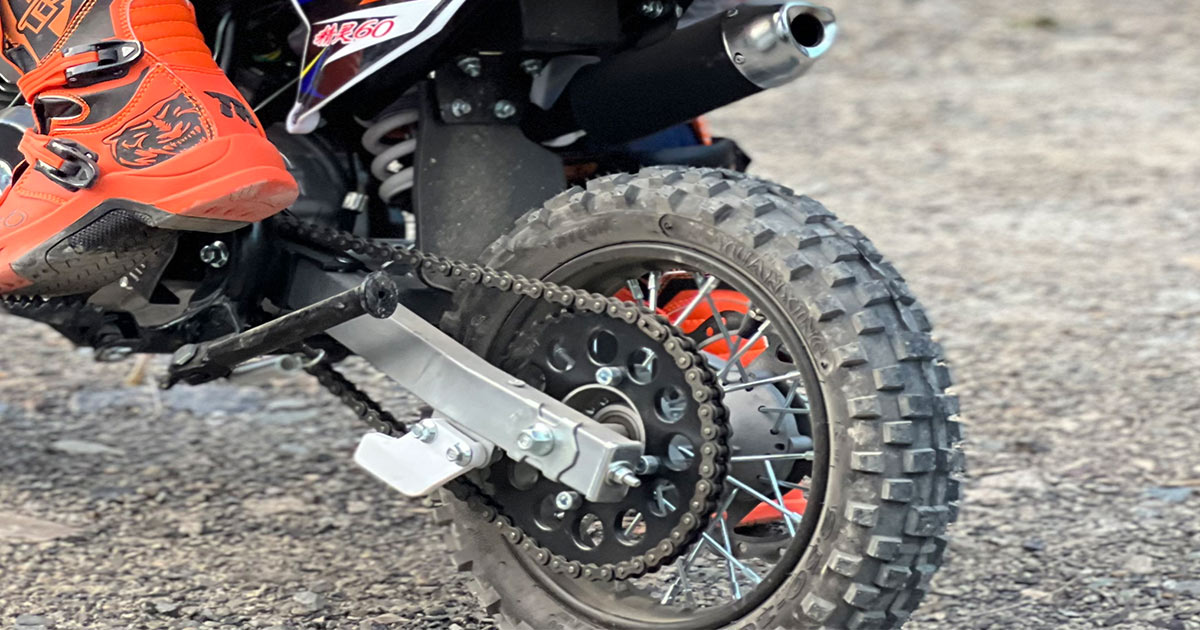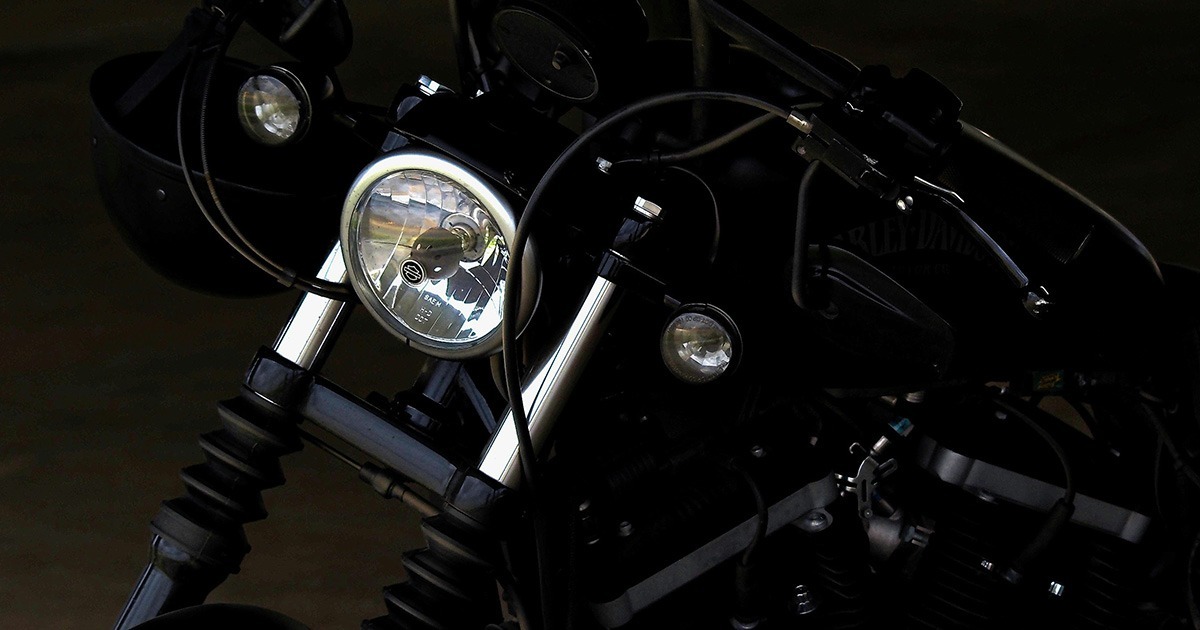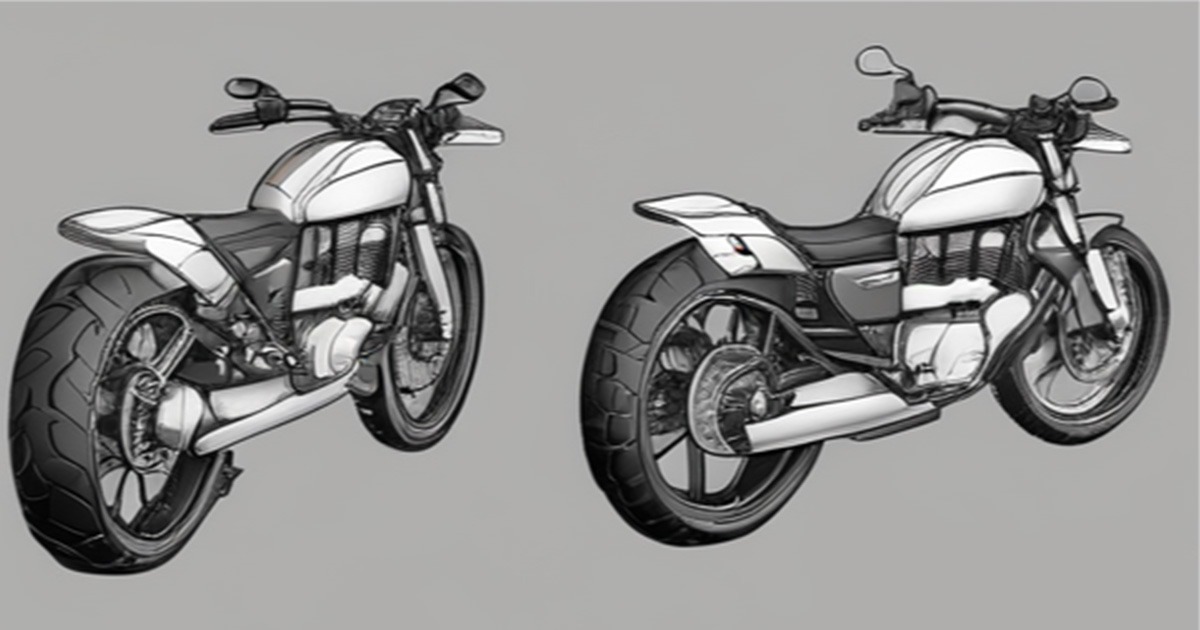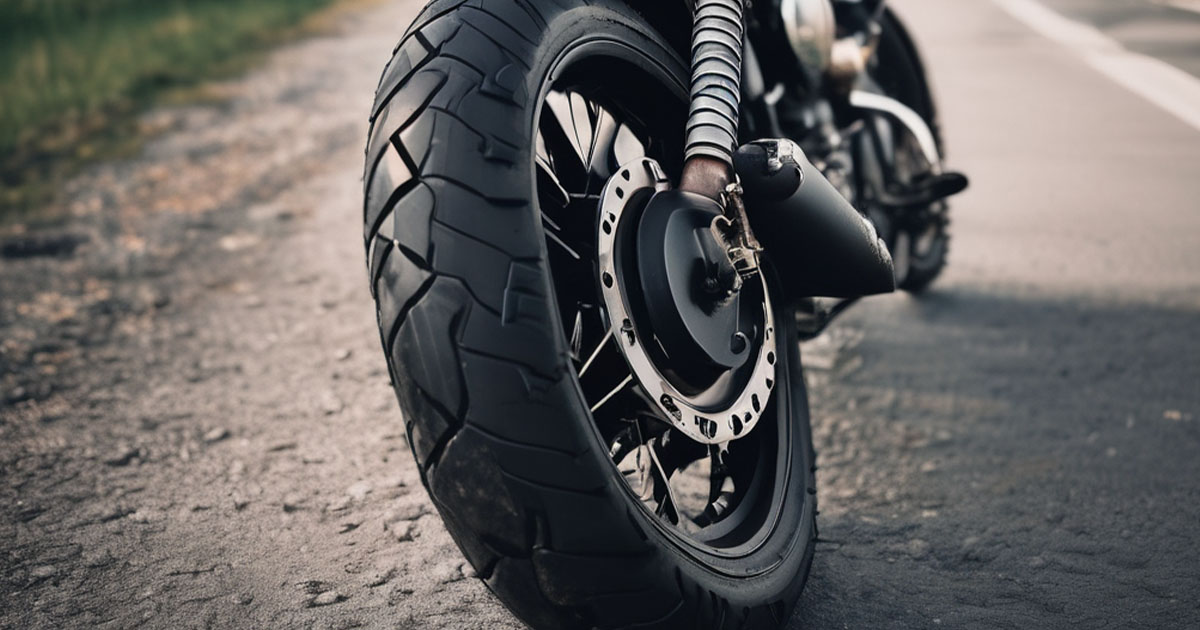Nothing beats the feeling of unrestrained freedom you get when you travel across wild trails on your dirt bike. Being free of the reins of control, however, can prove to work against you – why not take that freedom and turn it out on the open highway? By making your dirt bike street legal, you effectively enhance the already existing sense of freedom you get from taking your bike out onto the tracks.
Culminating an amalgam between the unruly exhilaration of off-road biking and the convenience of on-road transport, this process requires exceptional care for detail, as well as awareness of state laws.
Our step-by-step guide on “how to make a street legal dirt bike” will guide you through the legal intricacies, provide detailed instructions for the necessary modifications, and set you firmly on your way to a lawful street adventure. Fix your helmet, it’s time to take to the streets!
Understanding the Basics of Dirt Bike Street Legal
The way from dirt to pavement is paved with good intentions and a blend of engineering skills and legislation knowledge. Dirt bike street legality is the paramount point along the track for many riders. This is not just an opportunity to ride out in the open; this is a system of ensuring balance and order along the street bike regulation track.
The addition of headlights, mirrors, and other necessary modifications and updates combined with getting the right documentation makes your dirt bicycle a perfectly street-legal model. Title, registration, and insurance form the main part of the equation.
Whether you are a casual motorist or a passionate dirt sports lover, the way from dirt to street goes through these basic points of knowledge.
Legal Issues of Titling Dirt Bike Street Legal
The title is the legal document that declares your bike street-usable. While it all sounds as easy as bolting on some mirrors and turn signals, it is far more nuanced. The legalities of riding dirt bikes vary significantly from state to state, so the first rule of your championship is – to know your local DMV rules.
Equipment and Inspections
What your dirt bike needs to have is certain street-legal equipment; among these are headlights, taillights, brake lights, turn signals, mirrors, horns, and DOT-approved tires. Moreover, it must pass a VIN inspection and maybe, a safety inspection, depending on the requirements of your state.
Documentation and Registration
You will have to collect and submit the necessary documentation, which typically includes evidence of ownership, the title application and/or registration application, and insurance, and go to your local DMV or similar institution to get your bike titled, registered, and approved for street use if it meets the equipment and inspection requirements.
State-Specific Requirements
It should be noted that the requirements are different from one state to another. Particularly, in Colorado, you will need to fill in certain forms, such as DR 2686 and DR 2444, the former being the Certification of Equipment Compliance for Motorcycles, and the latter – the State of Colorado Statement of Fact. You will also be required to pass an in-person VIN and compliance inspection, which will be conducted by the Colorado State Patrol.
In Michigan, to meet the requirements, you will have to install the parts that are compliant with DOT and register your dirt bike at the Michigan Secretary of State, providing them with the necessary information, such as your name, address, make, model, and year of your dirt bike and the evidence of ownership.
Step-By-Step Guide on How to Make a Dirt Bike Street Legal
It might seem like an immensely challenging project, but the task of turning your hardcore off-roader into a street-legal ride is doable. Here is a detailed, step-by-step guide on how to undertake the process:
DOT-Approved Tires
The first step to turning your dirt bike into a street-legal vehicle pertains to the tires or, to be more precise, to the choice of DOT-approved tires. Your dirt bike will only be roadworthy if it is equipped with the Department of Transportation-approved tires.
These are specially created to navigate the pavement and are distinguished by the presence of the ” DOT” mark on the tire sidewall. In such a way, you may rest assured that your tires meet all the necessary safety-related criteria.

Functional Lighting System
The street-legal dirt bike should also be easily visible to other users of the road. The installation of the appropriate angles of the functional lighting is, therefore also critical.
This should consist of headlights, tail lights, and turn signals, and all these elements should be compliant with the DOT standards. Furthermore, remember that such a system will not only increase the visibility of your bike to others but also allow you to communicate with other drivers.

Mirrors and Reflectors
To stay aware of the traffic coming up behind you, you should also invest in both the mirrors and reflectors on your new street-legal dirt bike. The latter should be placed on the sides and rear of your bike.

Compliant Braking System
To turn your dirt bike into a street-legal vehicle you have to properly examine the current state of your braking system. You might need to upgrade both the front and rear brake to effectively stop and will on asphalt roads, especially if you pick up some speed.

Emissions and Environmental Standards
Your new street-legal dirt must also be able to pass the emissions tests at your state’s environmental standards, which may require the installation of the appropriate exhaust to be added.
Registration and Licensing
Finally, to convert the hardware, you will need the correct paperwork such as the registration of your new dirt bike and the acquisition of a license plate. You will have to take your vehicle to the local DMV and show your proof of ownership and all the receipts for the parts used. Please Read our Guide on “Do you need a license for a dirt bike” if you need to know about license and registration.
How Much to Make a Dirt Bike Street Legal?
Converting a dirt bike to a street-legal one is fun, but it probably involves various costs. Let’s evaluate the potential expenses this process may incur:
Initial Assessment and Legalities
DMV Fees: these can include the inspection, title, registration, and probably a road use tax in your area. These costs can range from around $20 to more than $200, depending on the state.
Cost of Mandatory Upgrades
- DOT-Approved Tires: A single tire may cost between $100 and $200.
- Lighting System: A full set contains several pieces: headlights, brake lights, and turn signals, for example. Their cost probably ranges from $150 to $500.
- Mirrors and Reflectors: They should cost between $20 and $100.
- Braking System: Upgrading to DOT-approved gear probably costs from $100 to $300.
- License Plate Bracket: A simple bracket probably costs less than $50.
Cost of Optional Upgrades
- Odometer/Speedometer: These optional pieces probably cost between $50 and $200.
- Kickstand: A robust kickstand can probably cost you about $20 to $100.
- Upgraded Gearing: Between $100 and $500, depending on the model of your bike.
- Cooling System Fan: To prevent your bike from overheating in stop-and-go traffic, consider buying a fan that probably costs about $100 to $200.
- Cush Drive Hub: This option probably costs from $200 to $500.
Labor Costs
If you aren’t the one getting your hands dirty, the labor costs of having these modifications professionally installed can vary considerably. While you might be looking at hourly rates in the region of $50 to $100 per hour, the total labor cost could be as little as $200 or well over $1000.
Total Estimated Cost
So, the total cost of making a dirt bike street legal can be anything from a few hundred dollars to several thousand. Of course, it’s worth pointing out that these figures are just estimates, as the true cost will depend on several factors, such as the specific requirements in your state, the type of bike you have, and other variables. As such, it’s always a good idea to do some research and get a quote from different shops and sellers to make sure you’re getting the best deal.
Safety and Compliance to Follow When Making a Dirt Bike Street Legal
At the time of converting your dirt bike to a street-legal vehicle, you must keep in mind the need for safety and compliance. What I mean is the process of conversion is not only about making your bike more convenient to use on the roads but also about making sure it meets all the legal safety standards, thus, protecting your life and the lives of other road users.
Prioritizing Safety During and After Conversion
The process of transformation involves many changes in the bike, from the lighting system to the braking system. All of them must satisfy legal standards and improve the safety parameters of your bike.
For example, the use of DOT-approved tires and having a functional lighting system presents no real safety hazard, while it benefits the maneuvering capacity and the visibility of your bike, considerably decreasing the risk of accidents.
Besides, the use of mirrors on the handlebars or the body of the vehicle and reflective tapes and equipment is also essential to let you remain aware of the environment.
Regular Maintenance and Inspection
When the conversion of your dirt bike is over, it is not the end of putting it in a street-legal mode. You will still have to take some measures to make sure it remains adequately maintained.
One such measure is the regular inspection of the lighting, brakes, tires, and emissions to ensure they are continuously in tune with the legal requirements. Regular maintenance extends the lifespan of your bike and makes sure it is safe to use on public roads.

Making a Dirt Bike Street Legal: Special Considerations
How to Make A 125cc Dirt Bike Street Legal
Challenges: Smaller bikes, particularly 125cc dirt bikes, may have smaller lighting and braking systems that fall short of what is required for street legality. Emissions standards are another potential issue.
Solutions: Upgrade the lighting, obviously sticking with DOT-approved components; the odd brake-system tweak to shorten stopping distances might not go amiss, and MCP if the exhaust needs some work. Also, make sure the bike carries all of the equipment which is mandatory; remember, this varies between jurisdictions. Mirrors, horns, and a speedometer might need to be added, removed, or replaced.
How to Make A 50cc Dirt Bikes Street Legal
Unique Requirements: For mini bikes or 50cc dirt bikes, the key challenge related to their weakened and inadequate construction as well as often underpowered engines. The vehicles may not be able to maintain the minimum speeds of roads.
Potential Limitations: Some areas may have implemented a minimum speed of 35 or even 45 mph, making these bikes illegal. Check with the regulations touching speed, short distances, and minimal engine power in relevant jurisdictions.
Solutions: Ensure that the bike is safer to use in traffic by verifying that its lighting systems are DOT-approved and by adding mirrors and horns. Ensure that the engine, possibly up to several hundred ccs, allows the bike to go faster than the mandated safe speeds. Finally, verify the regional regulations to understand where and how a 50cc bike can be legally operated on roads.

Conclusion
Turning your dirt bike street legal is the merger of thrill-seeking off-road riding and the practicality of the on-road world. Our complete guide to the necessary mods, requirements for registration, and insurance with safety and legality in the forefront is now wrapped. The time for giving your bike wider capabilities and potentially enhancing its overall performance is done in a safe and sure to be a legal manner.
Always remember, a bike transformation gone well is bred from careful attention to every detail but most importantly the rules. With these modifications, your dirt bike is converted, the dirt road just connects to the paved one and you can vanish into the distance.
Get your bike ready for that much needed freedom from fit to fit and back again. No more cops, no more binding ridgity. Through the trails on your now “street” legal dirt bike. Enjoy the ability to take your pursuits off the range but also the option to run to town when need be. Ready to put your tires on the streets??
Check the bike and make sure she’s ready for the requirements ahead. I hope the trails don’t stop at the pavement ahead. Get started on turning your bike here today Having your bike conversion to a converted “street legal” dirt bike may be in your future.
References:
https://5starregistration.com/bike/how-to-make-a-dirt-bike-street-legal-in-michigan/
https://staythetrail.org/how-to-make-a-dirt-bike-street-legal-in-colorado/
https://www.zmperformance.com/blog/how-to-make-a-dirt-bike-street-legal/
https://www.neighbor.com/storage-blog/are-dirt-bikes-street-legal/
https://www.dirtlegal.com/blog/how-to-make-your-dirt-bike-street-legal
